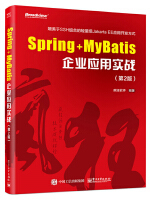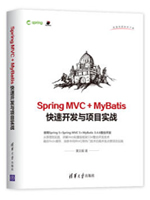本站收集了一篇相关的编程文章,网友边景明根据主题投稿了本篇教程内容,涉及到Spring、@NotEmpty、@NotBlank、@NotNull、Spring @NotEmpty、@NotBlank、@NotNull相关内容,已被183网友关注,内容中涉及的知识点可以在下方直接下载获取。
Spring @NotEmpty、@NotBlank、@NotNull
1:引入依赖
<dependency>
<groupId>org.springframework.boot</groupId>
<artifactId>spring-boot-starter-web</artifactId>
<version>2.0.5.RELEASE</version>
</dependency>
@NotEmpty、@NotBlank、@NotNull 包的位置:
import javax.validation.constraints.*;
2:区别
@NotNull
适用于基本数据类型(Integer,Long,Double等等),当 @NotNull 注解被使用在 String 类型的数据上,则表示该数据不能为 Null(但是可以为 Empty)
注:被其标注的字段可以使用 @size、@Max、@Min 对字段数值进行大小的控制
@NotBlank
适用于 String 类型的数据上,加了@NotBlank 注解的参数不能为 Null 且 trim() 之后 size > 0,必须有实际字符
@NotEmpty
适用于 String、Collection集合、Map、数组等等,加了@NotEmpty 注解的参数不能为 Null 或者 长度为 0
3:使用方法
@Data
public class BigPeople {
@ApiModelProperty(value = "id" ,required = true)
@NotNull(message = "id不能为空")
@Length(message = "id不能超过{max}个长度",max = 10)
private Integer id;
@ApiModelProperty(value = "name" ,required = true)
@NotBlank(message = "name不能为空")
@Size(message = "名字最长为{max} 个字",max = 10)
private String name;
@ApiModelProperty(value = "age" ,required = true)
@NotNull(message = "id不能为空")
@Range(message = "age的长度范围为{min}岁到{max}岁之间",min = 5,max = 10)
private Integer age;
@ApiModelProperty(value = "treeNode" ,required = true)
@NotEmpty(message = "treeNode不能为空")
private List<String> treeNode;
}@Valid 包位置:
import javax.validation.Valid;
@Validated 包的位置
import org.springframework.validation.annotation.Validated;
@ApiOperation(value = "新增或者修改一个人的信息")
@PostMapping("/updateOrInsert")
public Result updateOrInsert(@Valid @RequestBody Person person){
Boolean updateOrInsert = personService.updateOrInsert(person);
if (updateOrInsert) {
return new Result(ResultCode.SUCCESS,updateOrInsert);
}
return new Result(ResultCode.ERROR, "新增或者修改一个人的信息失败");
}
@ApiOperation(value = "新增或者修改一个人的信息")
@PostMapping("/updateOrInsert")
public Result updateOrInsert(@Validated @RequestBody Person person){
Boolean updateOrInsert = personService.updateOrInsert(person);
if (updateOrInsert) {
return new Result(ResultCode.SUCCESS,updateOrInsert);
}
return new Result(ResultCode.ERROR, "新增或者修改一个人的信息失败");
}最上面三个注释: 必须需要搭配@Valid 或者@Validated使用,在检验Controller的入参是否符合规范时
@Valid 和 @Validated 比较
最后我们来对 @Valid 和 @Validated 两个注解进行总结下:
1:@Valid 和 @Validated 两者都可以对数据进行校验,待校验字段上打的规则注解(@NotNull, @NotEmpty等)都可以对 @Valid 和 @Validated 生效;
2:@Valid 进行校验的时候,需要用 BindingResult 来做一个校验结果接收。当校验不通过的时候,如果手动不 return ,则并不会阻止程序的执行;
3:@Validated 进行校验的时候,当校验不通过的时候,程序会抛出400异常,阻止方法中的代码执行,这时需要再写一个全局校验异常捕获处理类,然后返回校验提示。
4:总体来说,@Validated 使用起来要比 @Valid 方便一些,它可以帮我们节省一定的代码,并且使得方法看上去更加的简洁。
此包下其它常用的校验注解:
| 注解 | 含义 |
|---|---|
| @Null | 元素必须为null |
| @NotNull | 元素不能null |
| @AssertTrue | 元素必须为true |
| @AssertFalse | 元素必须是false |
| @Min(value) | 元素必须是一个数字,其值必须大于等于指定的最小值 |
| @Max(value) | 元素必须是一个数字,其值必须小于等于指定的最大值 |
| @DecimalMin(value) | 元素必须是一个数字,其值必须大于等于指定的最小值 |
| @DecimalMax(value) | 元素必须是一个数字,其值必须小于等于指定的最大值 |
| @Size(max,min) | 元素的大小必须在指定的范围内 |
| @Digits(integer,fraction) | 元素必须是一个数字,其值必须在可接受的范围内 |
| @Past | 元素必须是一个过去的日期 |
| @Future | 元素必须是一个将来的日期 |
| @Pattern(value) | 元素必须符合指定的正则表达式 |
@Length @NotEmpty @Range | 1:元素必须是电子邮箱地址 2:字符串的大小必须在指定的范围内 3:字符串必须非空 4:元素必须在合理的范围内 |
到此这篇关于浅谈Spring中@NotEmpty、@NotBlank、@NotNull区别的文章就介绍到这了,更多相关Spring @NotEmpty、@NotBlank、@NotNull内容请搜索码农之家以前的文章或继续浏览下面的相关文章希望大家以后多多支持码农之家!



















